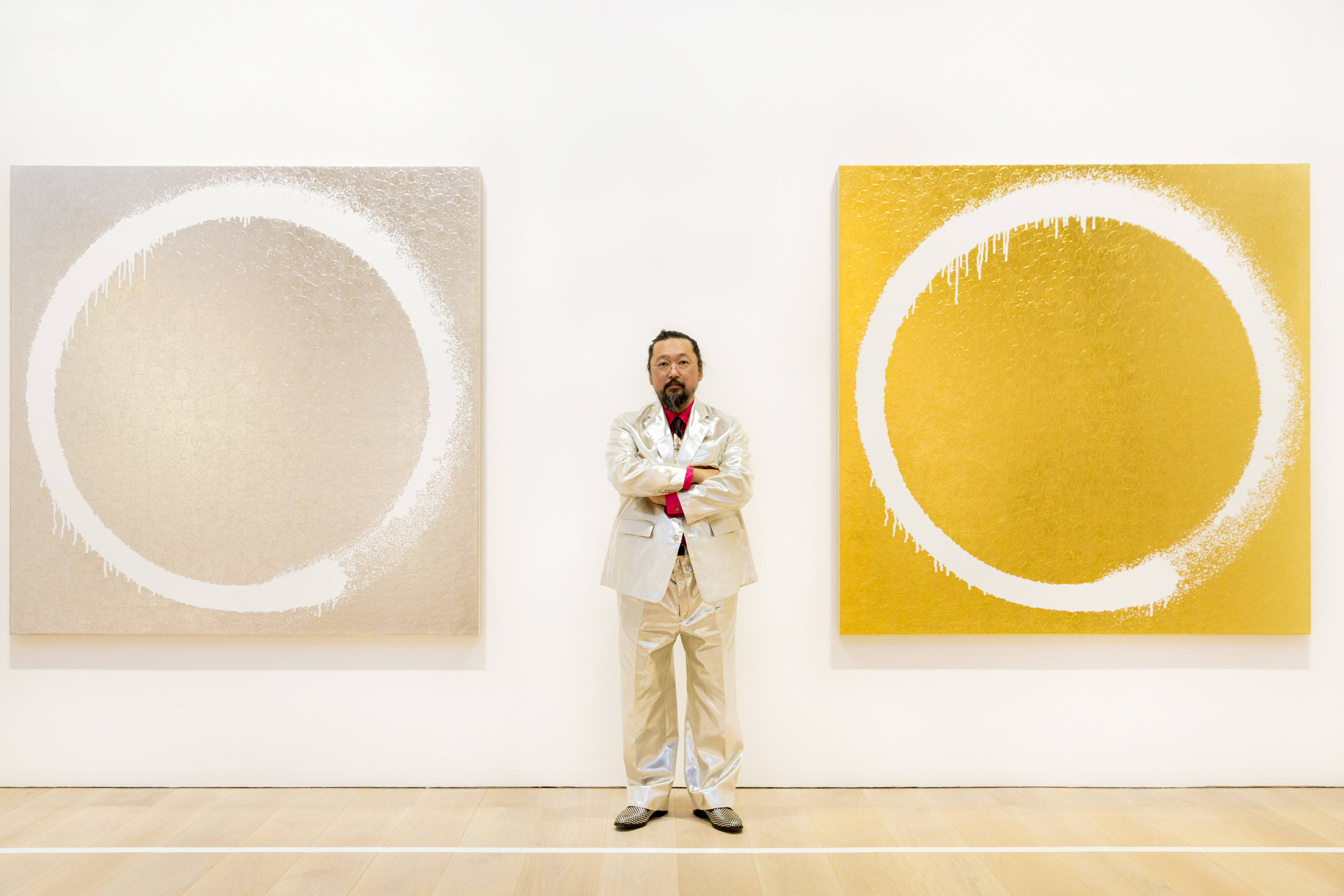Ebisu Yokocho has never looked so fabulous. It's the night before Halloween and costumed women with talon-like nails and feathered eyelashes snake their way through a boisterous crowd crammed into this narrow alley of food stalls and bars. The smell of booze and grilled meat mingles with the scent of perfume, stage makeup and sweat. A wandering guitarist's sing-a-long is interrupted by pro-wrestlers who come crashing to the ground in front of him, and everyone cheers. A buxom burlesque dancer gyrates to the Beatles' "Twist and Shout." Behind her, a sushi chef slices up a whole tuna into hundreds of bite-size servings, while nearby a girl in a pink wig hugs a man wearing a fish on his head. And somewhere among all the fun Takashi Murakami, dressed as a giant cartoon flower, is taking selfies with anyone who asks.
Say what you will about Japan's most controversial artist, he sure know's how to throw an after-party.
It's a much more serious mood earlier in the day when I speak with Murakami at the opening of "Takashi Murakami: The 500 Arhats" at the Mori Art Museum in Tokyo's ritzy Roppongi Hills complex — but he is no less flamboyant. Dressed in a shiny silver suit more befitting of a rock star than an artist, he explains to The Japan Times just how little he cares about what his Japanese audience thinks of him, and why he has finally decided to hold a solo exhibition of his work here after 14 years.



















With your current subscription plan you can comment on stories. However, before writing your first comment, please create a display name in the Profile section of your subscriber account page.